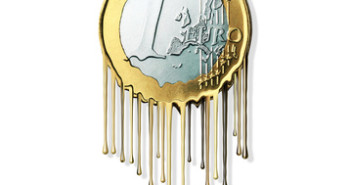As mentioned beforehand, the Federal Reserve doesn’t have many tools to move the economy. Also most other central banks have already tried various conventional and unconventional tools to get out of the crisis. So did governments.
Nearly 4 years after Lehman Brothers collapsed, recovery is slow or nonexistent. The world is still deleveraging from the various bubbles and fighting the Debt Mountains is a Sisyphean task. Perhaps it’s time for a different approach?
One way to fight debt is by eroding it – making it worth less – inflating away. An idea that floated for some time but hasn’t received much attention is that central banks will target nominal growth instead of real growth.
This is one big step forward from fighting deflation. GDP takes inflation into account. The rise in prices erodes nominal growth. This makes sense. The best thing is to have strong growth with stable prices.
However, in the current situation, the economies are hardly growing, and so are prices. Debt remains high.
So, if you can’t have strong real growth, nominal growth could be a substitute. The US economy grew by 1.7% in 2011 and prices rose by 3%. That is a nominal GDP growth rate of around 4.7%.
The Fed stated that an inflation rate of 2% is desired. The ECB has a similar goal.
Instead of targeting inflation as most centrals do, the target could be a high nominal GDP growth rate of 7% for example. Targeting NGDP means disregarding accelerated rises in prices. In real terms, the economy could remain flat, and inflation could run at 7%. The benefit would be fast erosion of debt that isn’t linked to inflation.
This is a very unconventional approach, and a total change of doctrine of central banks which are programmed to fight inflation. The US suffered from high inflation in the 70s and underwent a significant recession to lower the accelerated rise in prices.
But was the situation that bad back in the 70s?
Inflation was ugly, yes: 7.4% on average. However, real GDP growth was at 3.3% on average, much better than the 1.5% growth in the 2000s or 2.4% after the crisis began.
Stirring inflation not only erodes debt, but encourages consumption, as consumers see no chance of falling prices.
The problem is that once you let the inflation genie out of the bottle, it is very hard to control it. With the current levels of debt and depression in the Western world, there is a lot of room between controlled inflation + extremely slow growth and raging inflation.
Are policymakers up for such a shift? It’s hard to believe that they’ll ever admit it or communicate it. However, the recent move by Draghi to announce potential QE despite German opposition, and the potential of QE3 in the US despite having extremely low bond yields means that stimulating or at least tolerating higher inflation is possible policy course.
If Bernanke indeed launches QE3, it will practically target nominal GDP.
This article is part of the Forex Monthly Outlook. You can download it by joining the newsletter in the form below, which appears on any article on Forex Crunch.
